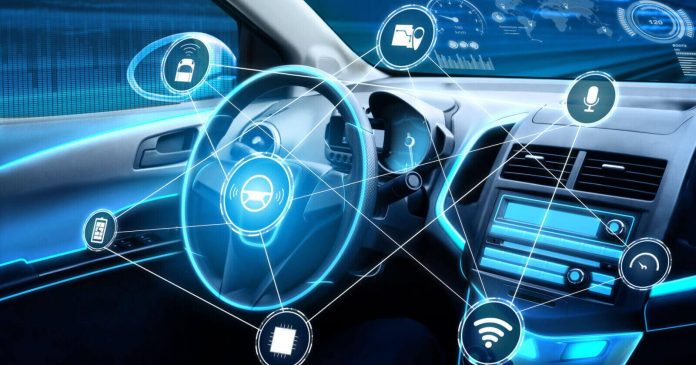Advanced Driver Assistance Systems (ADAS) are a suite of technologies designed to enhance vehicle safety and improve the driving experience by reducing human error. These systems utilize a combination of sensors, cameras, radar, and software algorithms to monitor the vehicle’s surroundings and assist drivers in making informed decisions. Here’s an in-depth look at how ADAS system work:
1. Core Components of ADAS
The effectiveness of ADAS relies on several key components:
- Sensors:
- Cameras: Capture visual data to detect road signs, lane markings, and objects.
- Radar: Measures distances and detects the speed of nearby vehicles.
- Ultrasonic Sensors: Aid in close-range detection, such as parking assistance.
- LiDAR (Light Detection and Ranging): Provides high-resolution mapping of the vehicle’s surroundings.
- Processing Unit:
- Centralized computing systems process data from various sensors to create a comprehensive understanding of the environment.
- Software Algorithms:
- Machine learning and AI algorithms interpret sensor data and make real-time decisions to assist or alert the driver.
2. Key Features of ADAS
ADAS technologies encompass a wide range of features, including:
- Adaptive Cruise Control (ACC): Maintains a safe distance from the vehicle ahead by adjusting speed automatically.
- Lane Departure Warning (LDW): Alerts drivers if the vehicle unintentionally drifts out of its lane.
- Automatic Emergency Braking (AEB): Detects potential collisions and applies brakes to prevent or reduce impact.
- Blind Spot Detection: Warns drivers about vehicles in their blind spots.
- Traffic Sign Recognition: Identifies road signs and displays them to the driver.
- Parking Assistance: Guides drivers during parking using cameras and ultrasonic sensors.
3. How ADAS Works in Real Time
- Data Collection:
- Sensors and cameras installed around the vehicle constantly capture real-time data, including the speed of nearby vehicles, road conditions, lane markings, pedestrians, and other obstacles data analytics.
- Data Fusion:
- The processing unit aggregates information from multiple sensors to build a cohesive understanding of the environment. For instance, a radar sensor might detect the distance of a car ahead, while a camera identifies its type and speed.
- Situation Analysis:
- Using software algorithms, the system interprets the data to determine potential hazards. For example, it might detect that the vehicle ahead is slowing down rapidly or that the car is drifting out of its lane.
- Decision-Making:
- Based on the analyzed data, the system decides whether to alert the driver, adjust vehicle functions, or take direct action. For instance:
- If a pedestrian suddenly crosses the road, the Automatic Emergency Braking (AEB) system may activate.
- If the car begins to veer out of its lane, Lane Keep Assist (LKA) might provide corrective steering.
- Based on the analyzed data, the system decides whether to alert the driver, adjust vehicle functions, or take direct action. For instance:
- Driver Interaction:
- The system communicates with the driver through visual alerts (e.g., dashboard icons), auditory warnings (e.g., beeping sounds), or haptic feedback (e.g., vibrations in the steering wheel).
Example: Adaptive Cruise Control in Action
Imagine driving on a highway with Adaptive Cruise Control (ACC) activated. Here’s how it works step-by-step:
- The radar sensor detects a car ahead and measures its distance and speed.
- Cameras verify the presence of the vehicle and ensure it is in the same lane.
- The processing unit calculates the safe following distance and adjusts your car’s speed to maintain that gap.
- If the car ahead accelerates or changes lanes, the system recalculates and increases your car’s speed to the preset limit.
4. Benefits of ADAS
- Enhanced Safety: Reduces accidents caused by human error.
- Improved Comfort: Minimizes driver workload during long trips.
- Regulatory Compliance: Meets safety standards set by governments and organizations.
- Lower Insurance Costs: Vehicles equipped with ADAS may qualify for reduced premiums.
5. Challenges and Limitations
Despite its advantages, ADAS faces certain challenges:
- Sensor Limitations: Poor weather conditions like heavy rain or fog can affect sensor accuracy.
- High Costs: Advanced systems can be expensive to install and maintain.
- Driver Overreliance: Overdependence on ADAS might lead to complacency.
Conclusion
ADAS represents a significant leap toward autonomous driving by offering real-time assistance and safety features. For example, features like Adaptive Cruise Control and Automatic Emergency Braking demonstrate how these systems work in harmony to prevent accidents and improve driving experiences. As technology continues to evolve, the integration of AI and enhanced sensor capabilities will further improve the effectiveness and accessibility of these systems, making roads safer for everyone.
